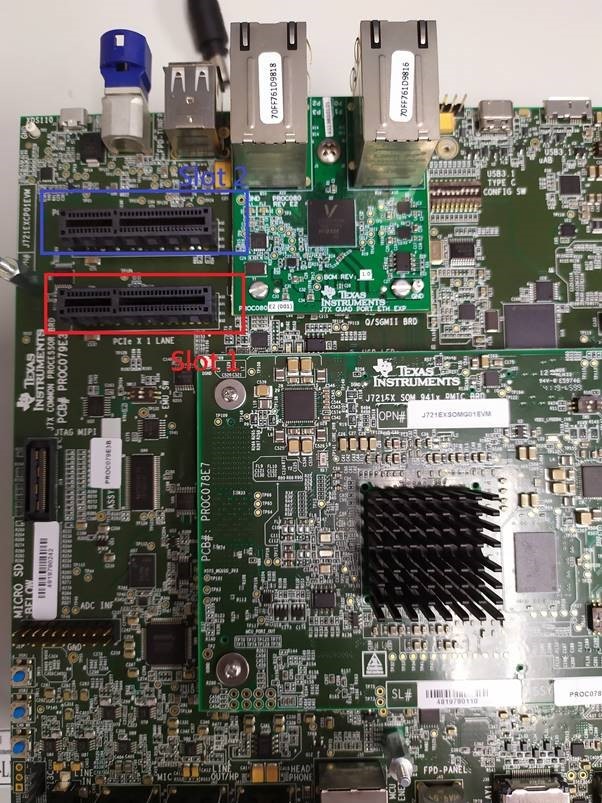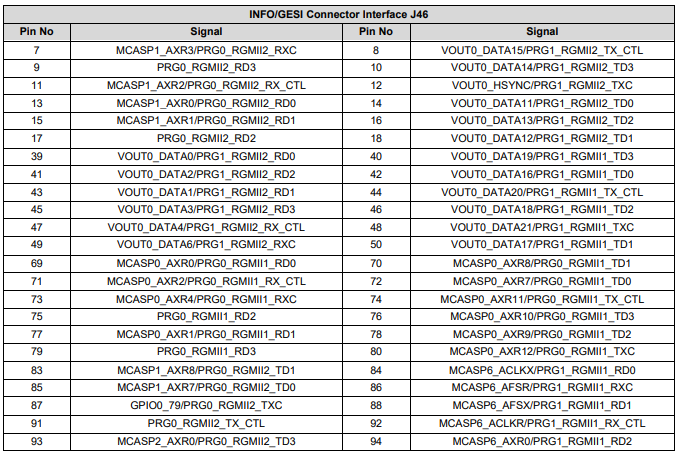Other Parts Discussed in Thread: DRA829
Tool/software: TI C/C++ Compiler
I want to get the pins related with MDIO of "PCIe x 2 LANE" to operate MDIO functions.
The MDIO pins seem to be GPIO pins connected with MCU, right?
It is because I saw only one MDIO bus in u-boot.
- u-boot
=> mdio list
ethernet@046000000:
0 - TI DP83867 <--> ethernet@046000000
However, I didn't see any GPIO information on EVM. Do you have any ideas?
- Linux
# ls -al /sys/class/gpio/
total 0
drwxr-xr-x 2 root root 0 Jun 17 14:17 .
drwxr-xr-x 61 root root 0 Jun 17 14:17 ..
--w------- 1 root root 65536 Jun 17 14:24 export
lrwxrwxrwx 1 root root 0 Jun 17 14:17 gpiochip284 -> ../../devices/platform/interconnect@100000/2010000.i2c/i2c-4/4-0020/gpio/gpiochip284
lrwxrwxrwx 1 root root 0 Jun 17 14:17 gpiochip292 -> ../../devices/platform/interconnect@100000/601000.gpio/gpio/gpiochip292
lrwxrwxrwx 1 root root 0 Jun 17 14:17 gpiochip328 -> ../../devices/platform/interconnect@100000/600000.gpio/gpio/gpiochip328
lrwxrwxrwx 1 root root 0 Jun 17 14:17 gpiochip456 -> ../../devices/platform/interconnect@100000/2060000.i2c/i2c-9/9-0020/gpio/gpiochip456
lrwxrwxrwx 1 root root 0 Jun 17 14:17 gpiochip464 -> ../../devices/platform/interconnect@100000/2030000.i2c/i2c-6/6-0020/gpio/gpiochip464
lrwxrwxrwx 1 root root 0 Jun 17 14:17 gpiochip472 -> ../../devices/platform/interconnect@100000/2000000.i2c/i2c-3/3-0022/gpio/gpiochip472
lrwxrwxrwx 1 root root 0 Jun 17 14:17 gpiochip496 -> ../../devices/platform/interconnect@100000/2000000.i2c/i2c-3/3-0020/gpio/gpiochip496
--w------- 1 root root 65536 Jun 17 14:17 unexport




